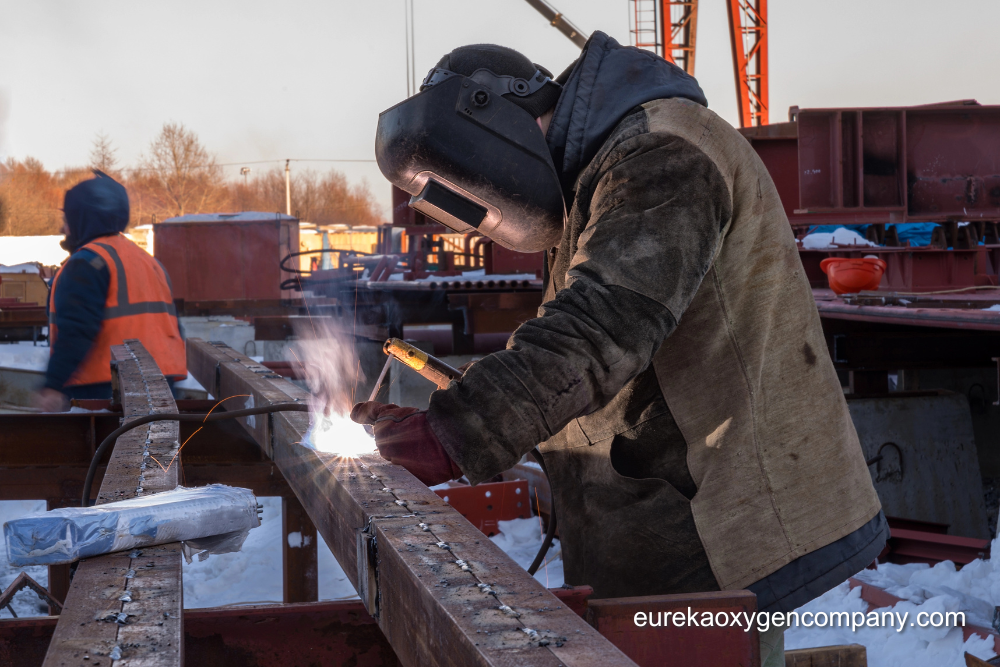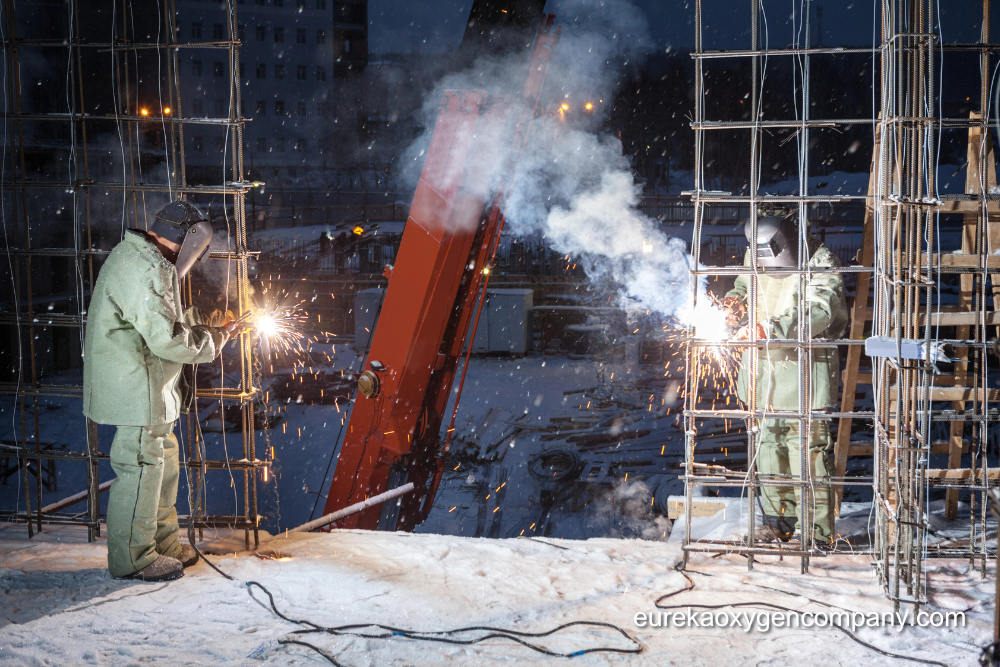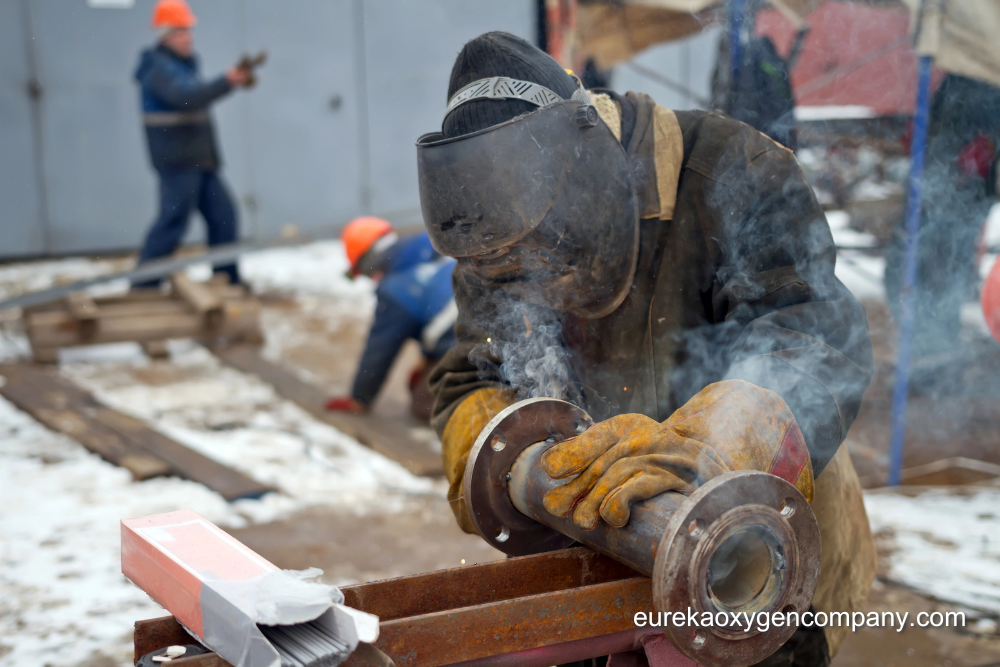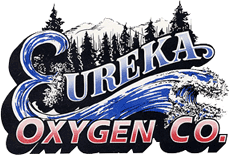Welding in winter presents unique challenges, from freezing temperatures to moisture in the air. However, it’s possible to achieve success with the proper techniques, equipment, and safety measures.
Challenges of Cold Weather Welding
Winter conditions can make welding more difficult than usual for several reasons. First, extreme cold can cause metals to behave differently, often leading to common issues like brittle welds or cracking. Low temperatures also affect the welding process, as colder metals require more heat to reach the proper temperature for welding. Additionally, cold air and moisture can impact the quality of the weld and compromise the integrity of the finished product.

Another factor to consider is the safety risks posed by the cold. When working outdoors or in unheated environments, workers can be exposed to harsh conditions that increase the chances of accidents and injuries. Adopting cold-weather welding strategies to mitigate these risks and ensure a safe and successful project is essential.
Winter Welding Tips: Preparing For The Cold
1. Preheat The Base Material
Preheating the base material is one of the best winter welding tips that will improve your projects. Cold metals can absorb heat too quickly, resulting in poor weld quality.
This technique ensures the metal reaches a more manageable temperature, resulting in successful welding in winter. The preheating temperature can vary depending on the material being welded, but it’s generally between 200°F and 500°F.
2. Use The Right Welding Supplies And Equipment
The right welding supplies and equipment are key when working in cold conditions. Make sure your welding machine is capable of handling low temperatures and can provide consistent heat. Cold weather can also cause the welding wires to become brittle, so it’s essential to use high-quality electrodes or filler materials designed for winter conditions.

Your welding torch should also be considered. It’s essential to use one suitable for low temperatures since certain materials can freeze or crack if they’re exposed to excessive cold. Ensure you check all your equipment and supplies before starting your project to avoid issues during the job.
Certain gases like argon and CO2 can behave differently in cold temperatures. Consult with your industrial gas supplier to ensure that you’re using the correct gases for winter conditions.
3. Protect Your Work Area From The Elements
When welding outdoors in the winter, protecting your work area from wind, snow, or rain is crucial. Wind can blow away protective gases, while snow or rain can cause contamination in the weld.
Use a portable shelter or tent to keep your workspace dry and shielded from the wind. Cover your welding machine and equipment with protective tarps or insulation to prevent them from freezing or becoming damaged by the weather.
4. Warm-Up The Equipment
Welding equipment, especially those powered by electrical circuits, can be negatively affected by freezing temperatures. Electrical connections, cables, and hoses can become brittle and difficult to handle in the cold.
Before using your equipment, give it time to warm up to the recommended operating temperature. Run a test weld to ensure everything is functioning correctly and check for potential issues such as weak electrical connections or equipment failure.
5. Stay Warm and Protected
Welding in cold weather is tough on the body, so wearing insulated clothing is essential to keep you warm. Cold extremities can interfere with the focus and precision required for welding tasks.

Layer up with thermal underwear, insulated gloves, and warm boots to keep you comfortable and safe on the job. Also, always wear proper personal protective equipment (PPE), such as a welding helmet, flame-resistant clothing, and safety boots.
Bonus: Fire Suppression Equipment And Services
Welding in winter can also increase the risk of fires, especially when working with flammable materials. Cold air can cause metals to contract, and welding sparks or hot metal debris can ignite nearby materials.
With this in mind, it’s essential to have fire suppression equipment and services on hand when welding in cold conditions, particularly in industrial settings. This includes fire extinguishers, blankets, and automatic sprinkler systems that are always accessible.
Cold-weather welding can be challenging, but with the right strategies and safety measures, you can achieve successful results even in harsh conditions. At Eureka Orygen, we have a robust welding supply and equipment that is perfect for the winter season. We also deliver gas cylinders at plenty of locations, from the Golden Gate Bridge to Gold Beach, OR.

